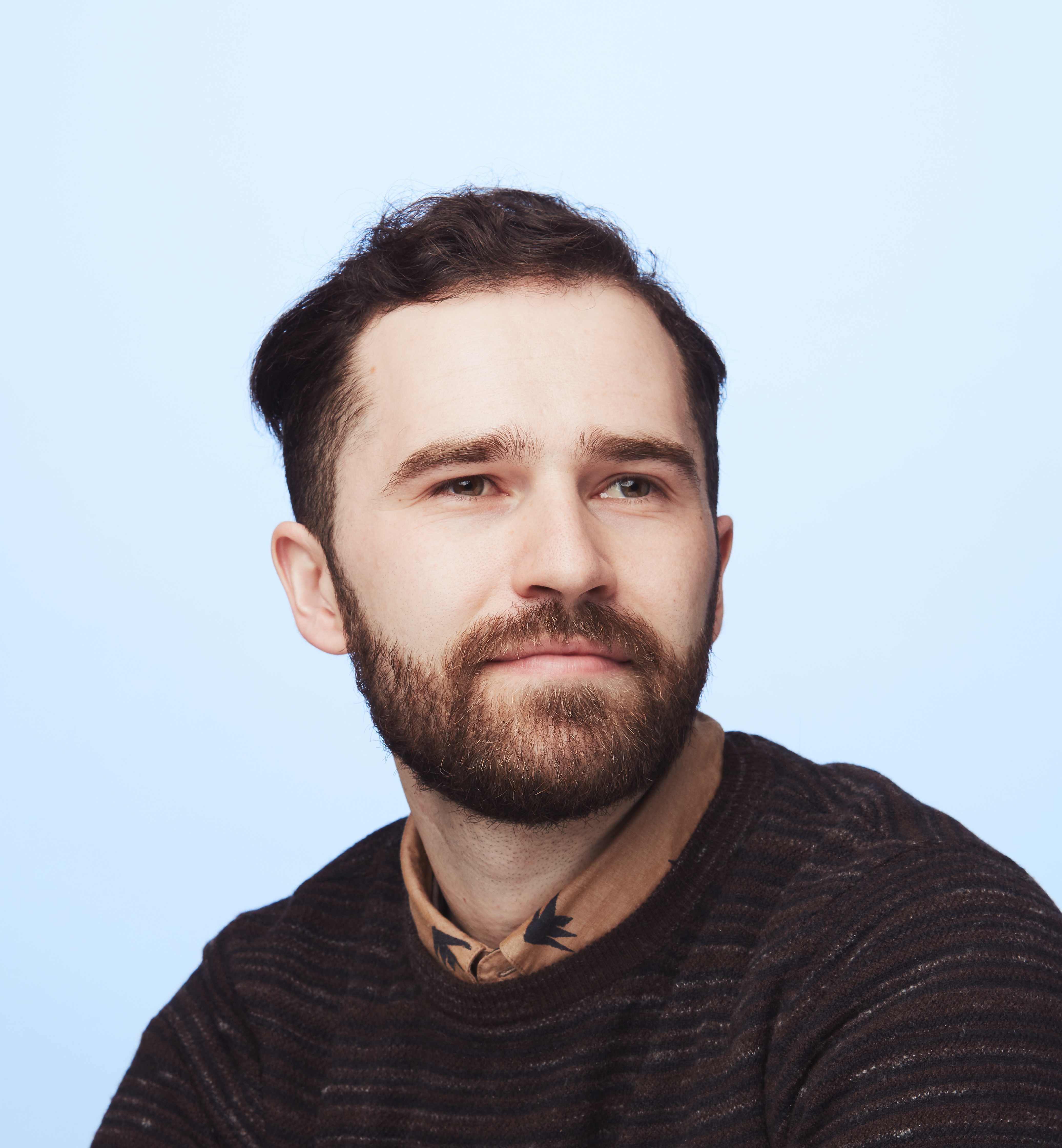
N Square Cohort #3: Remote//Connected
Launched by five of the largest peace and security funders in the US, N Square is a path-breaking initiative built on the idea that new forms of cross-sector collaboration—combined with the sheer ingenuity of an engaged public—will accelerate the achievement of internationally agreed goals to reduce nuclear dangers. A hands-on alliance among iconoclasts, innovators, funders, and advisors,
N Square brings new ideas, new people, and new perspectives to the “wicked problem” posed by nuclear weapons. By fostering partnerships between experts from diverse backgrounds, N Square helps nuclear specialists gain new perspective on problem-solving while introducing new allies to the complexities of the nuclear threat.
As a member of the Altimeter design group, I educated and collaborated with a team of nuclear professionals on a design project that would explore opportunities to bring new audiences to the topic of nuclear non-proliferation.
Find the full text here
Altimeter Design Group
Designer, Researcher, & Educator
Designer, Researcher, & Educator
• Coached nuclear researchers through the design process and developed a non-profit environmental group, and its products, from inception through first round of incubation.
• Organized, designed and facilitated an on-line event so that 6 creative teams could present their work to over 200 attendees.
The Innovators Network Over Time
The field of professionals working to control the threats we face from nuclear weapons is both insular and fragmented. The barriers to entry are high—the issues are complex, the language arcane, and the field has a history of secrecy. All that makes it difficult for newcomers to know how, where, or to whom they can offer expertise.
The Innovators Network reaches outside the sector to build bridges with other fields and to enable those inside the field to work collaboratively across organizations and focus areas, empowering them to work in new ways and to access new ideas that will help achieve national security goals. At the same time, it supports non-experts to explore and shape narratives about nuclear weapons and global security to engage a new generation. This illustration shows the radiating connections between ideas coming out of each cohort, as well as the increasing size and scale of the network. The project ideas opportunistically touch on each other, without strictly growing from or following each other, eventually coming together into a more coherent whole.
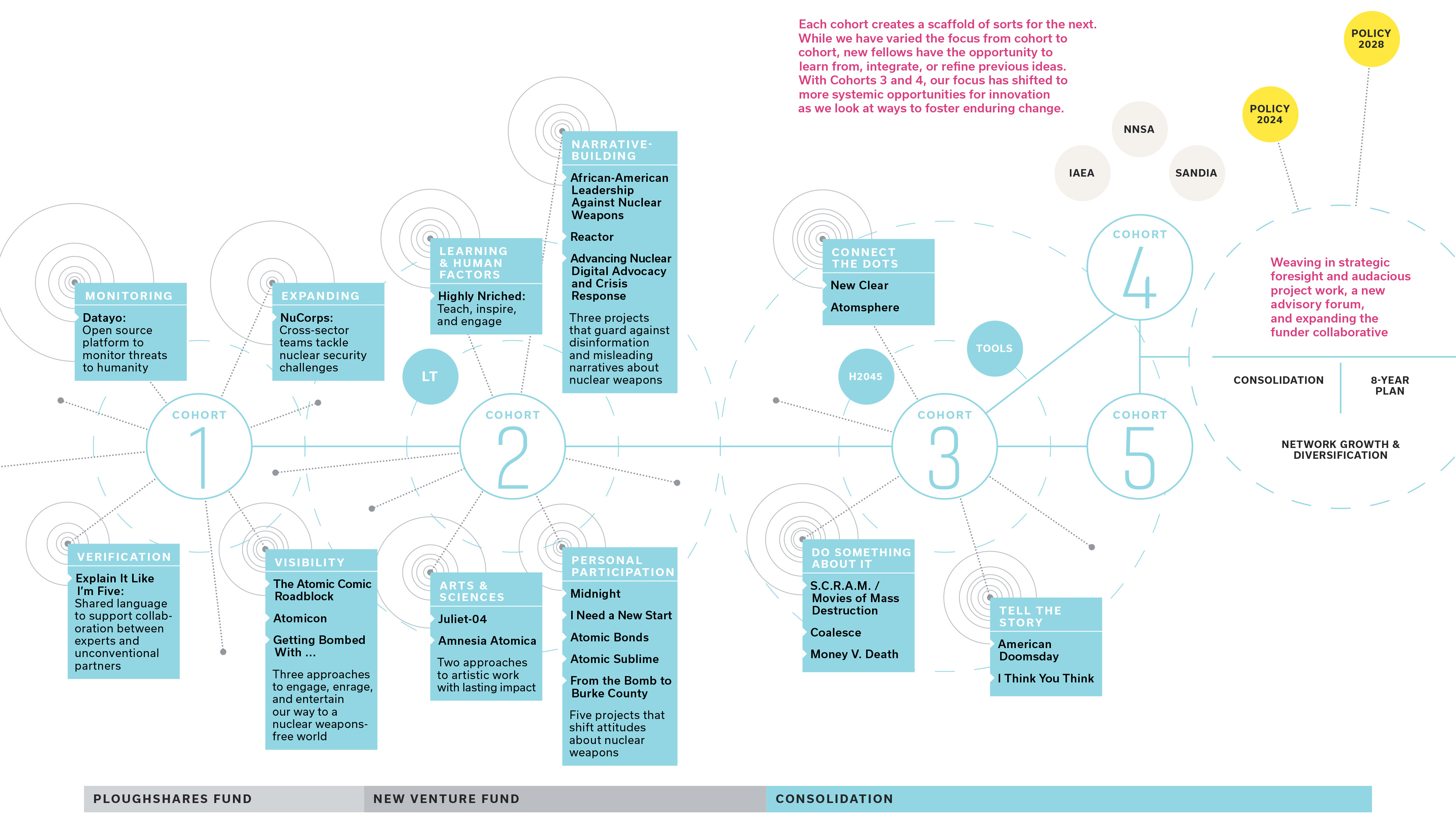
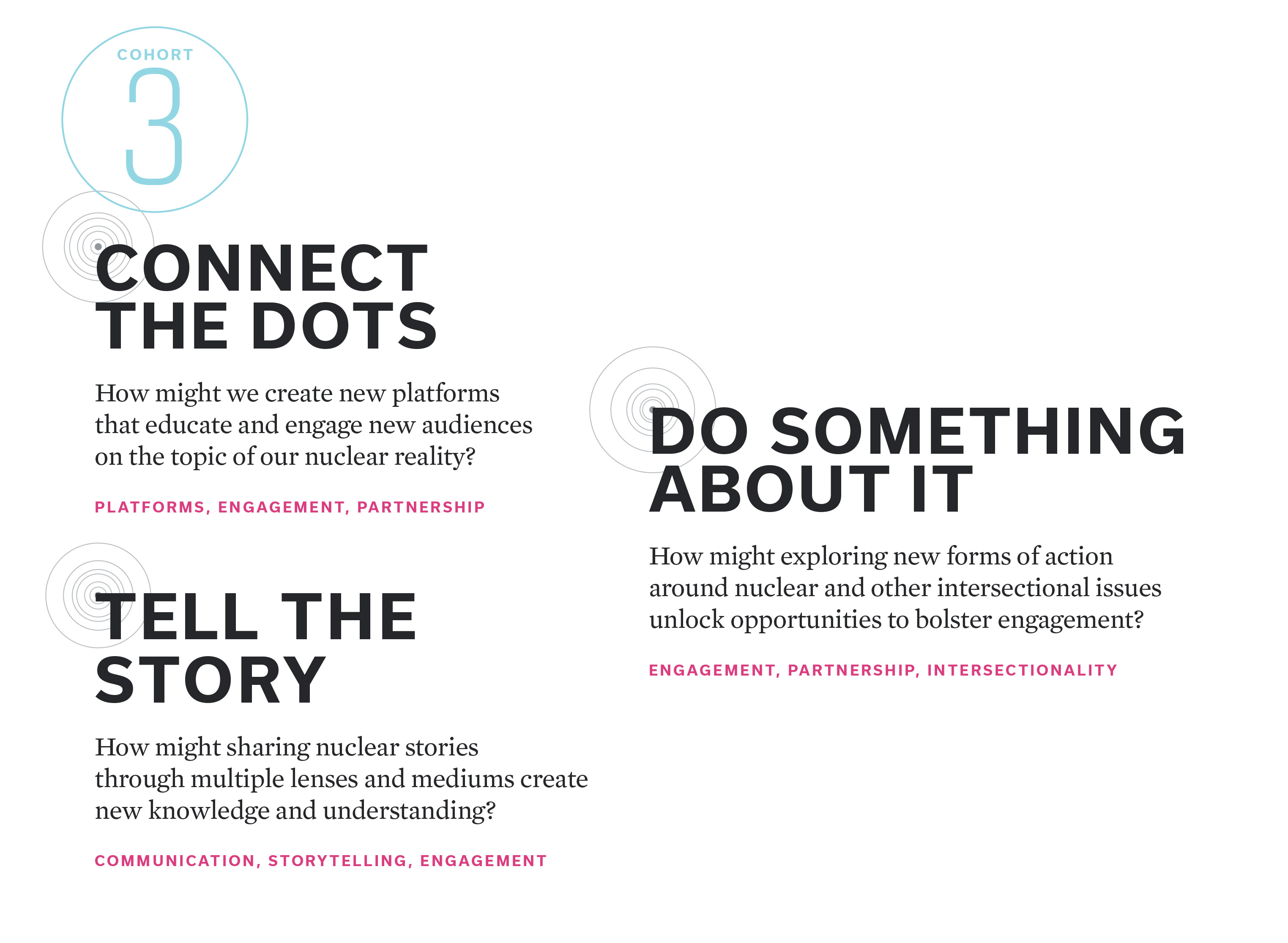
COHORT 3
Cohort 3 focused on communication. How do we take the ideas from previous cohorts and spread them to a larger audience? Engaging an audience is hard. It is harder still during a global pandemic when your message is about nuclear security.
PROCESS + ADAPTATION
During their fellowship, NSIN fellows work in small teams to tackle big problems— through and by design. It’s a form of professional development new to the field. Fellows gain practice in working together in ways they wouldn’t with people they might not otherwise, while coming to understand and apply the principles of creative process. Together, they prototype new approaches that add something to the nuclear risk reduction space that’s needed but does not yet exist.
DISCOVER
Ideas flow, and teams form around the ones that draw them. Once teams form, what do their collective skills and interests suggest about what specific problem they might tackle and how they might approach it?
DEFINE
Teams get granular about exactly what problem they are hoping to solve. Who is their audience, what are they trying to achieve, and what are their guiding principles? As their idea narrows, they interview real audiences to discover their needs, using that discovery to hone their idea and articulate the value proposition of their concept.
Ideas flow, and teams form around the ones that draw them. Once teams form, what do their collective skills and interests suggest about what specific problem they might tackle and how they might approach it?
DEFINE
Teams get granular about exactly what problem they are hoping to solve. Who is their audience, what are they trying to achieve, and what are their guiding principles? As their idea narrows, they interview real audiences to discover their needs, using that discovery to hone their idea and articulate the value proposition of their concept.
DESIGN
Teams take their top idea(s) into a prototyping phase. What does the concept look like? What are its elements? What is its mood? What might it look like in real life? Teams get creative, pushing their idea from abstract to concrete.
DELIVERY
Teams stress-test their prototype by presenting it to key stakeholders, often repeatedly, then translate that feedback into further refinements. Finally, teams deliver their prototype to a broad audience one final time.
Teams take their top idea(s) into a prototyping phase. What does the concept look like? What are its elements? What is its mood? What might it look like in real life? Teams get creative, pushing their idea from abstract to concrete.
DELIVERY
Teams stress-test their prototype by presenting it to key stakeholders, often repeatedly, then translate that feedback into further refinements. Finally, teams deliver their prototype to a broad audience one final time.


ATOMSPHERE
Mobilizing outdoors enthusiasts to protect the natural world from nuclear risksFELLOWS
Chantell Murphy
Lauren Borja
Georgia Francis King
DESIGNER
Adam Bowen
Atomsphere is an effort to spark this engagement at a time when nuclear risks are growing, offering outdoorsists actionable ways to feel safer in nature and ensure these spaces stay safe. For its launch, Atomsphere will produce branded Geiger counters to be used by outdoorsists to collect data about radiation in national and state parks. This information will upload to the Atomsphere platform, which will feature a mobile phone app to track outdoor activities and radiation exposure and an interactive website with aggregated data about how people use wild spaces and interact with potential contamination. By engaging with Atomsphere’s citizen-science projects, outdoorsists will help gather data to help protect beloved spaces and learn how the nuclear weapons legacy impacts environmental issues. These projects will also help Atomsphere pressure policymakers and business stakeholders to make decisions that protect the great outdoors from nuclear risks.


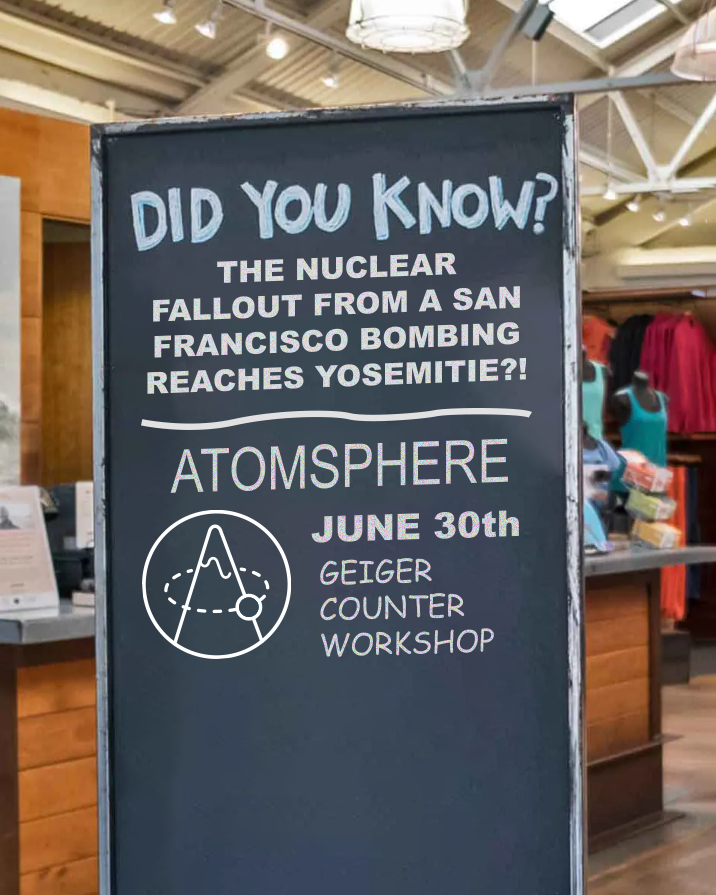


Fellows used mind-maps and user surveys to explore links between the outdoor and nuclear non-proliferation communities. Quick photoshop visual sketches, as well as physical prototypes, were used to test ideas and refine their strategy.

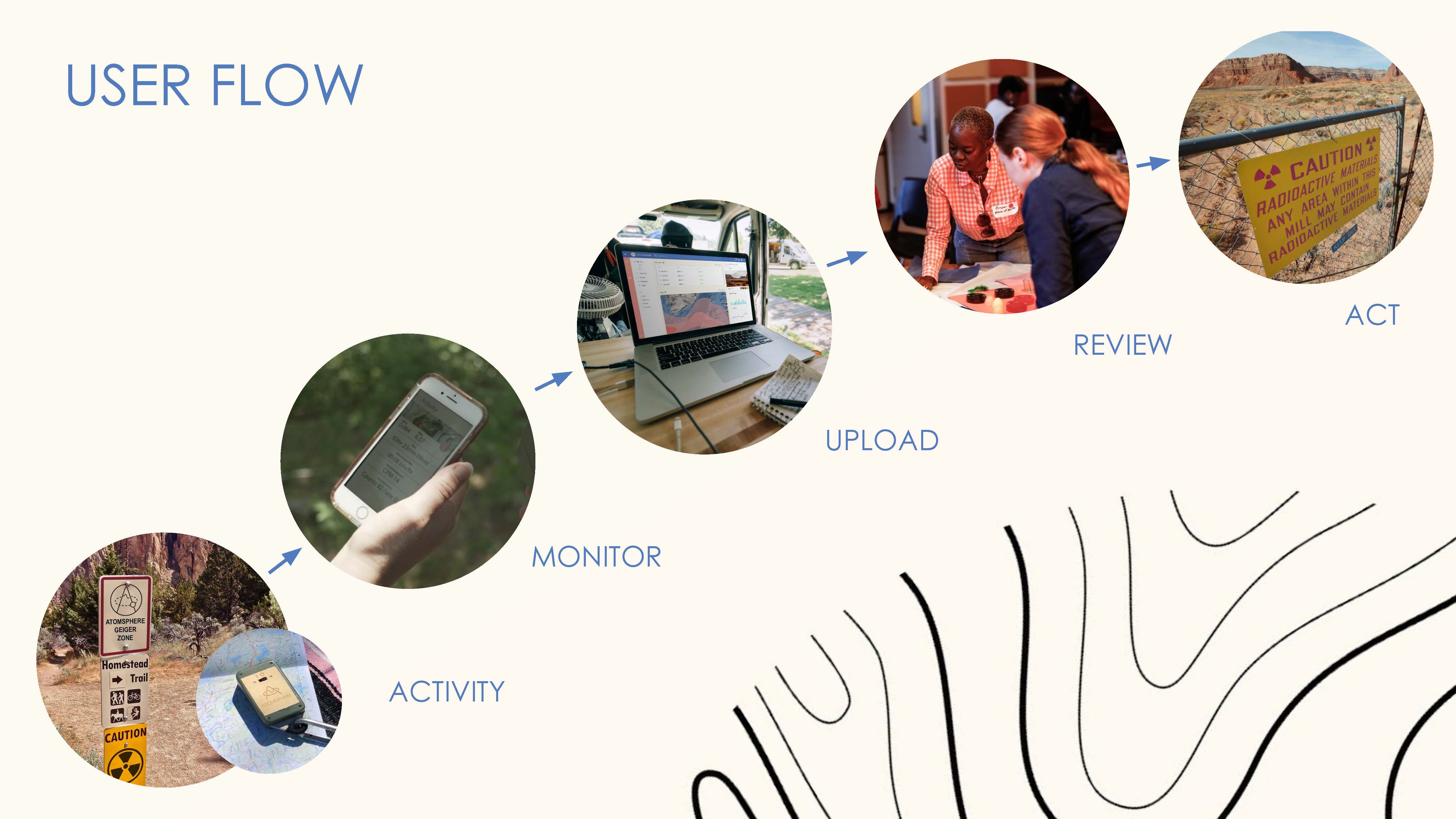





INOVATION SUMMIT 2020
On June 30, 2020, more than 200 people headed to Hopin—one of the online collaboration platforms N Square tested as part of our Tools for Adaptation series, for the third annual Innovation Summit. Introductory remarks were followed by videos highlighting each project the fellows would present. The main event was a series of panels, moderated by NSIN alums, with each team having two opportunities to present their work and field questions. The expo space featured digital booths where participants could stop by and video chat with current and prior fellows to learn more about their projects.
A print publication was created to document the projects and experiences of the cohort. Find the full text here

